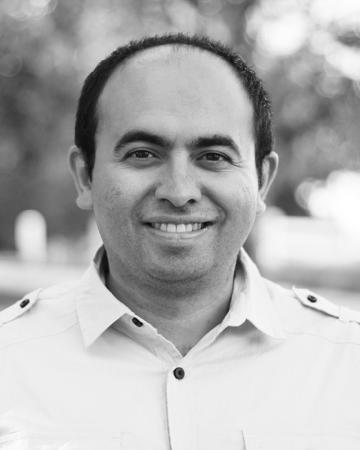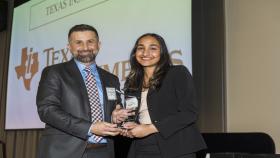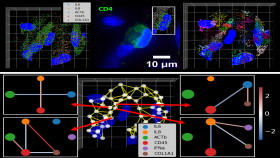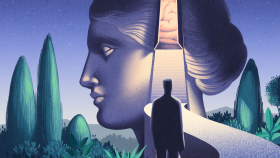Ahmet Coskun recently joined the Wallace H. Coulter Department of Biomedical Engineering at Georgia Tech and Emory University on August 1, 2019, as an assistant professor.
He received his Ph.D. from the University of California-Los Angeles, and did postdoctoral work at both the California Institute of Technology and Stanford University.
In a short interview with Coskun, he describes his research, reasons for joining the Coulter Department, future impact of his research, and shares some personal hobbies outside of research.
Can you please describe your spatial biology research?
The Single Cell Biotechnology Lab aims to study spatial biology in health and disease. Our research lies at the nexus of multiplex bioimaging, microfluidic biodynamics, and big data biocomputation. Using high-dimensional nanoscale imaging datasets, we address fundamental challenges in immuno-engineering, cancers, and pediatric diseases. Our lab pursues a transformative multi-omics technology to integrate spatially resolved epigenetics and spatial genomics, proteomics, and metabolomics, all in the same platform. We uniquely benefit from super-resolution microscopy, imaging mass spectrometry, combinatorial molecular barcoding, and machine learning to enhance the information capacity of our cellular data. Variability of single cell images can be used to understand differences in therapeutic responses, as well as satisfy our curiosity on understanding how cells are spatially organized in nature.
Why did you choose to join the BME department at Georgia Tech and Emory University?
I chose Georgia Tech and Emory University as my academic home because it provides a unique and exciting academic environment that blurs the boundaries between engineering and medicine. I was impressed by BME Department’s vision, visibility, and high-ranking resources. Smart engineering students and collaborative faculty members were also attractive to make an impact on the public health challenges. The City of Atlanta’s location also was favorable with well-connected airports, and with ample social opportunities for intellectual growth.
What do you see as the possible future impact of your work?
My work on deciphering how cells are geographically positioned in normal and abnormal biological systems will enable three main advances in biomedicine. First, we will be able to understand the mechanisms for why some patients do not respond to therapies from microscale differences of cellular makeup in tumors. Second, we will perform precision medicine approaches based on companion diagnostic value of our spatial cellular maps in cancers and pediatric diseases. We envision an integrated instrument to rapidly profile cellular compositions at the point-of-care for prescription of accurate levels and combinations of therapeutic drugs. Finally, our rich cellular images and movies will promote science communication for students through biology, art, and digital technologies such as virtual reality.
When you are not doing research or teaching, what do you like to do?
I like to go sight-seeing in nature and travel to new places. Exploring and learning about new cultures has been enjoyable outside my research time. I also try to match coffee types with various deserts in authentic coffeehouses. I also keep asking my students “what do you do for fun” as a way of balancing life and work, a key aspect to continuous and healthy productivity.
Media Contact
Walter Rich
Keywords
Latest BME News
Courses in the Wallace H. Coulter Department of Biomedical Engineering are being reformatted to incorporate AI and machine learning so students are prepared for a data-driven biotech sector.
Influenced by her mother's journey in engineering, Sriya Surapaneni hopes to inspire other young women in the field.
Coulter BME Professor Earns Tenure, Eyes Future of Innovation in Health and Medicine
The grant will fund the development of cutting-edge technology that could detect colorectal cancer through a simple breath test
The surgical support device landed Coulter BME its 4th consecutive win for the College of Engineering competition.
New research from Georgia Tech helps doctors predict how therapies will interact with a child's immune system, potentially improving outcomes and reducing risks.
Georgia Tech researchers reveal the dynamic role of inhibitory neurons in spatial memory and learning








